This past week, we joined our friend Charles Du who organized a small trip to Taitung (Taiwan). His vision for this trip was to improve his cooking skills and learn from other people passionate about cooking. Our friend picked Taitung for the fact that since 2012, the government has supported and promoted its slow food movement and Taitung also has the highest concentration of indigenous population in Taiwan. Located on the southeastern coast, it’s known for its natural beauty (lush mountains, breath-taking coastlines, beautiful rice paddies) and rich food culture and it is also the 3rd largest city in Taiwan.
This week blew our expectations so much that I decided to write about it as soon we got back to share all the experiences and wonderful people we met as you might want to check them out. Especially if you are passionate about food, love to live slowly, experience the local culture, and create new connections!
In this article, I share our overall itinerary, the experience we had, where we stayed, and of course the overall cost of this week.
If you aren’t familiar with Taiwan, make sure to check out everything we had to say about Taiwan!
Where did we stay?
The six of us booked a 3 story, 3BR ocean-view Airbnb steps away from the ocean in Dulan.
Here is a short video about Dulan and its beautiful ocean coastline which make it a popular spot for surfing…
This is the outside of our Airbnb:
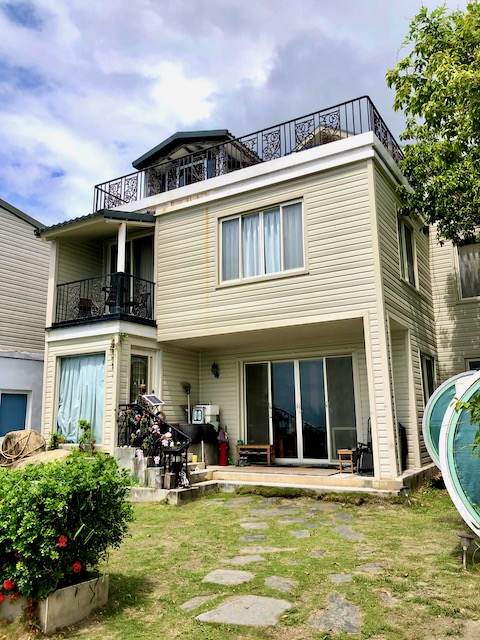
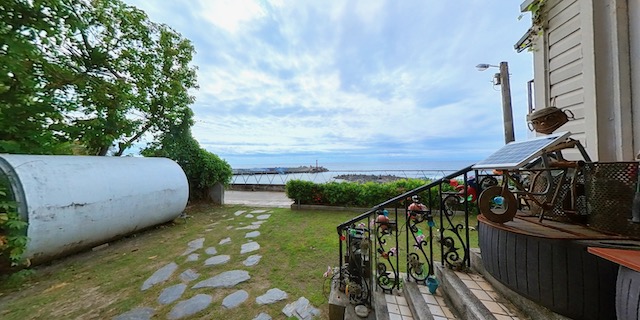
Here is our room and you can also check out room #2 and room #3 that are all unique and quite beautiful! And check out our room and our view from our balcony:
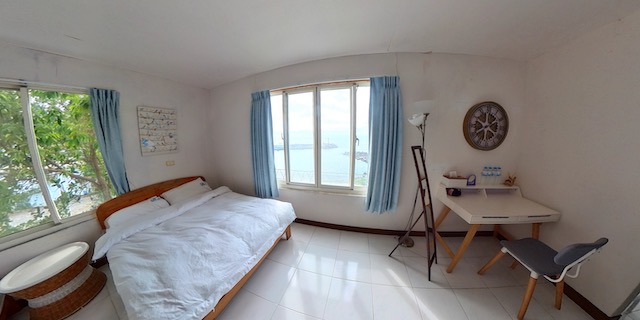
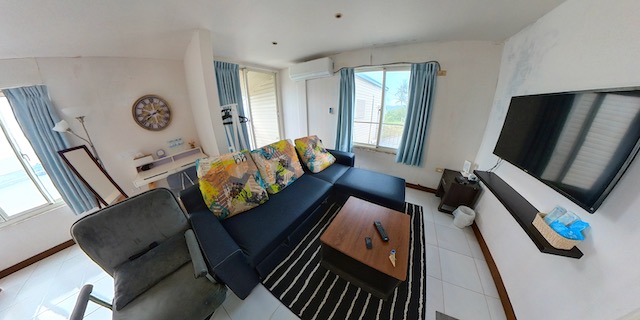
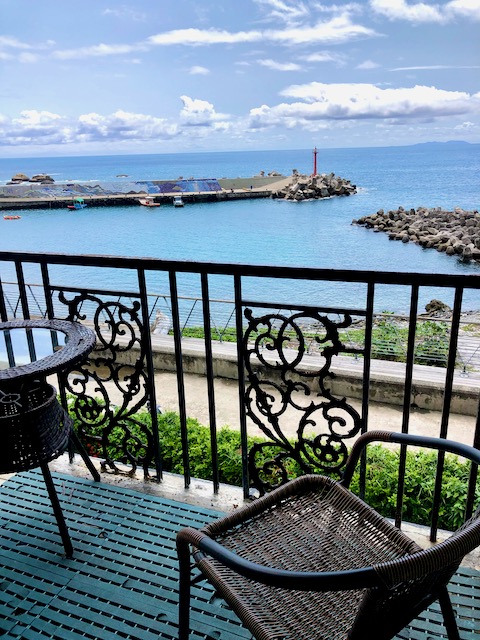
The best part was the ocean view from our balcony and the sunrise we could watch from there.
Where did we go? What did we do?
This getaway was spread over 5 days and 4 nights. Because most people in our group were working remotely, each morning was free for everyone to do what they wanted before getting together for our daily activity from 3 pm onward.
Here was our agenda:
- Day 1
- 1:00 pm – AirBnB check-in
- 3:30 pm – Millet Workshop at Kaiana Workshop
- 5:30 pm – Indigenous Dinner at Kaiana
- Day 2
- 3 pm – Harvest water spinach
- 4 pm – Practice Cooking with a private chef at B&B
- Day 3
- 3:30 pm – Popsicle stop
- 4 pm – Workshop and Dinner at 東軒坊 workshop
- Day 4
- 3:00 pm – Practice Cooking at TT Maker
- 7:00 pm – Dinner with local friends
- Day 5
- 11:00 am – Airbnb check-out
Let’s now dive into each day.
Day 1: Learning about millet, the Bunun tribe, and eating delicious indigenous food
We left Taipei Main Station early in the morning to commute to Guanshan to meet with our group.
We met at Kaiana where we learned about Bunun life and culture. Bunun is a tribe that lives in this area and uses millet as their staple.
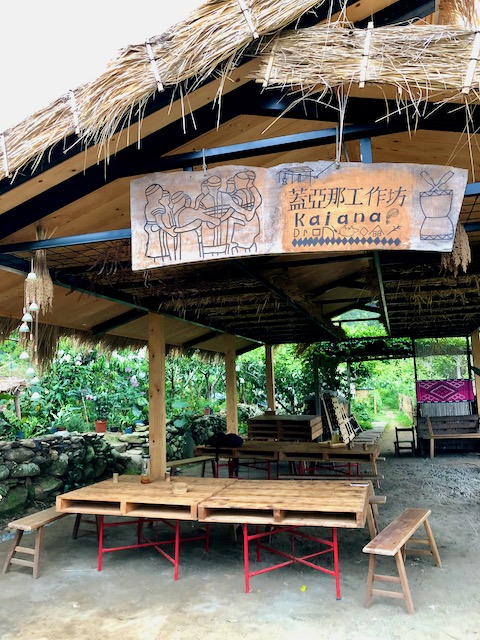
We started this first experience with a 2-hour long workshop to learn about the tribe and how to make millet. The process starts by smoking and drying the millet after being harvested. Then the amount of millet you want for the day is picked and you start by using your feet to remove the grain from the plant (this reminded me of how juice from grapes used to be extracted to make wine). We then used a giant pestle and two giant mortars to hit off the husks. After a few rounds of this activity (that was done in tandem), we used a big bamboo basket to get rid of the husks and repeat this operation many times. Once all the husk was gone, we washed the millet before cooking it. Quite an intensive process!
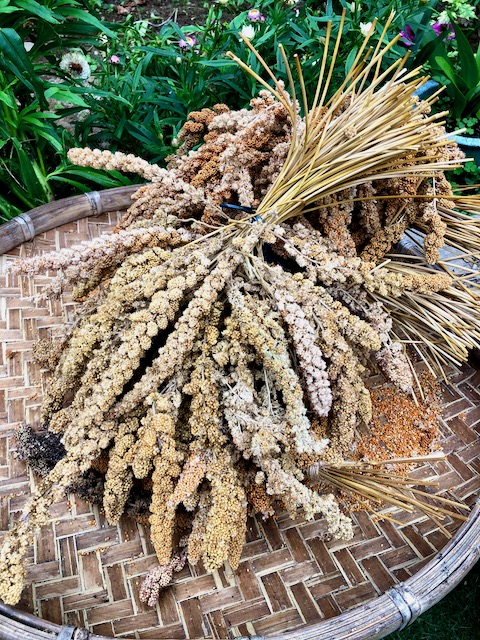
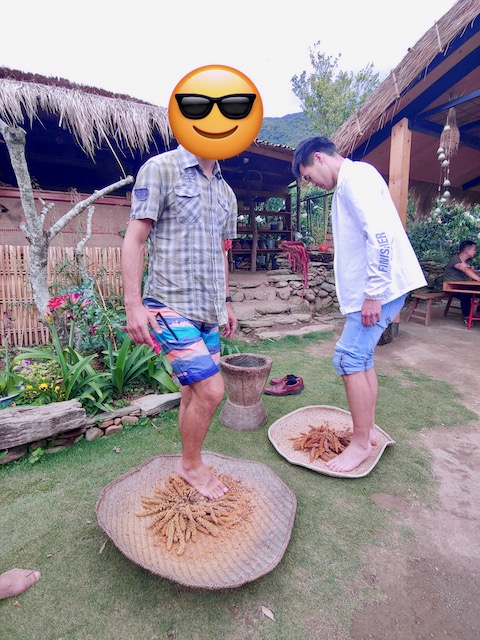
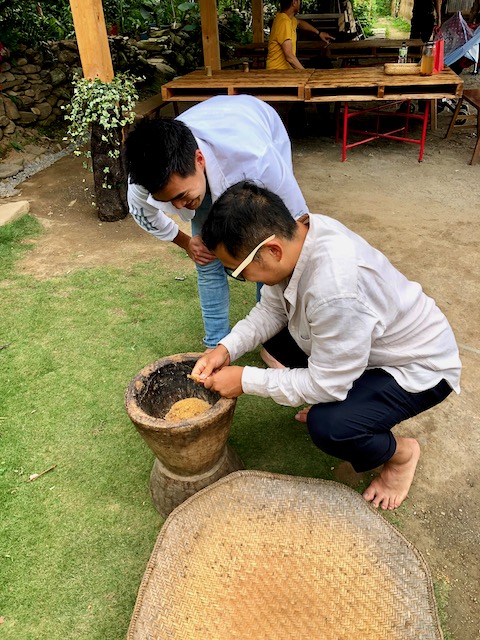
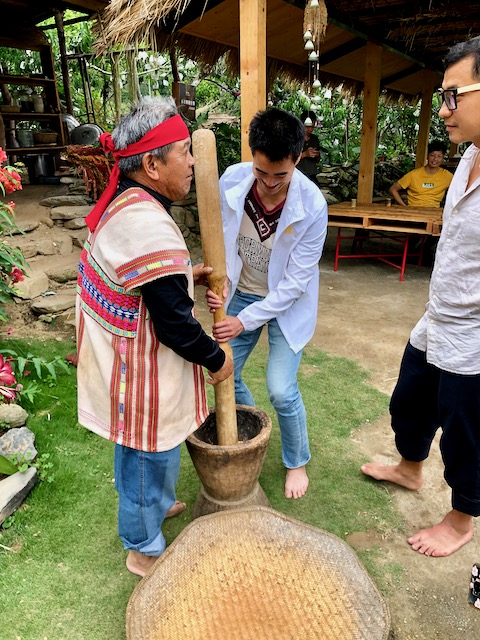
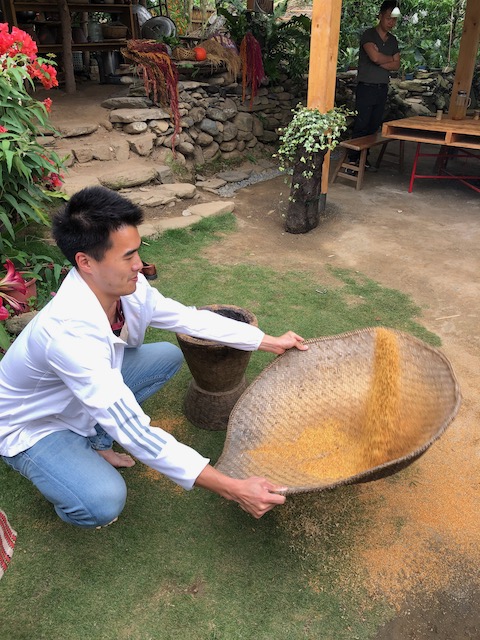
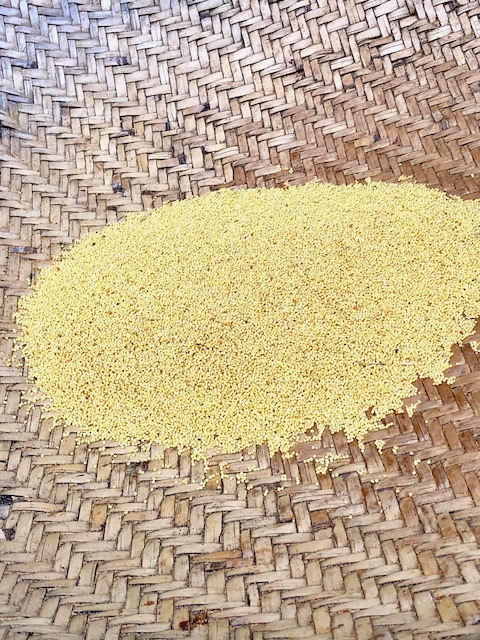
Did you know that with up to three times more calcium than rice, high amounts of iron, fiber, and other micronutrients, millets are far more nutritious than rice and wheat? (source)
We then learned about the story of the tribe through their annual calendar (that was basically a banner showing which activities are performed each month). Activities included finding fertile soil at the beginning of the year, planting the millet, hunting wild pigs (with their own gun, ammunition, and powders!), harvesting the millet, and smoking it to store it.
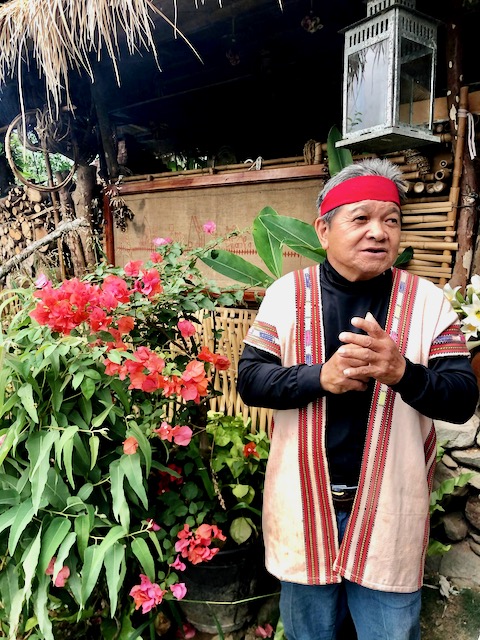
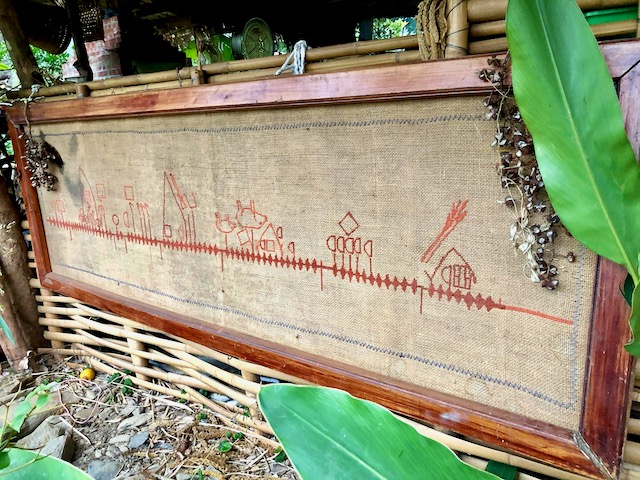
After storytelling was done we moved to cooking the millet, which is done through heating it on a large pan with pig fat and hitting it repeatedly with a large wooden spoon to give it its texture. Again a pretty labor-intensive process!
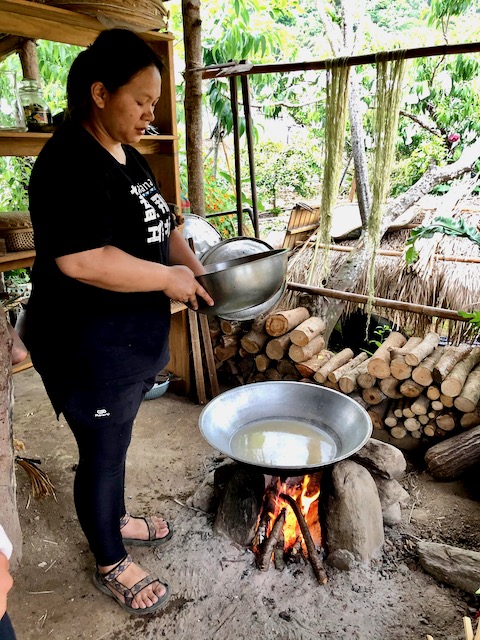

The tasting part of the event came next and was definitely another big highlight of that first day. We started with an appetizer plate made of tempura veggies, sweet potatoes, corn, and pig meat all of which were absolutely delicious. And while this was already a good amount of food, we then moved to the “plat de resistance” which was centered around the wild pig the tribe killed for us. We enjoyed wild pigs ribs along with some fatty pieces as well that went pretty well with the millet and the millet wine. The millet was the perfect pairing for all of this food and we also had homemade millet wine because why not?
Cost for this experience: 1500 NTD (50 USD) per person
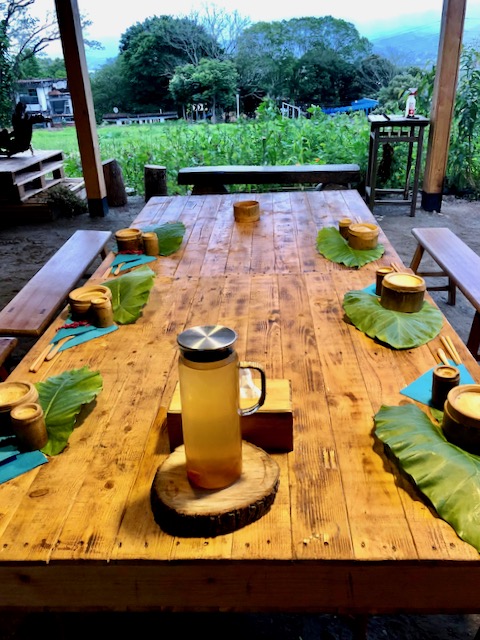
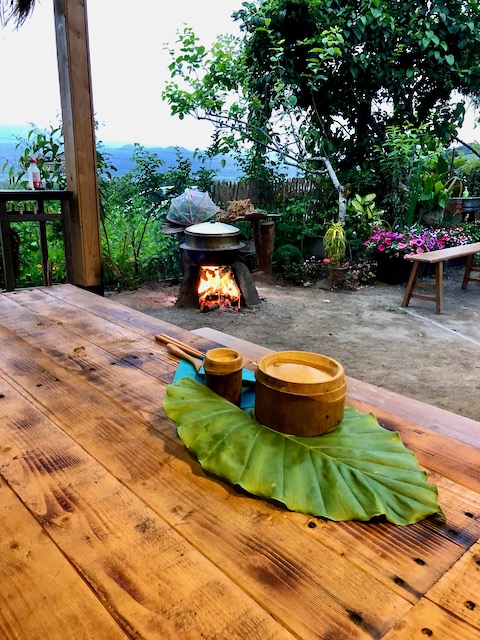
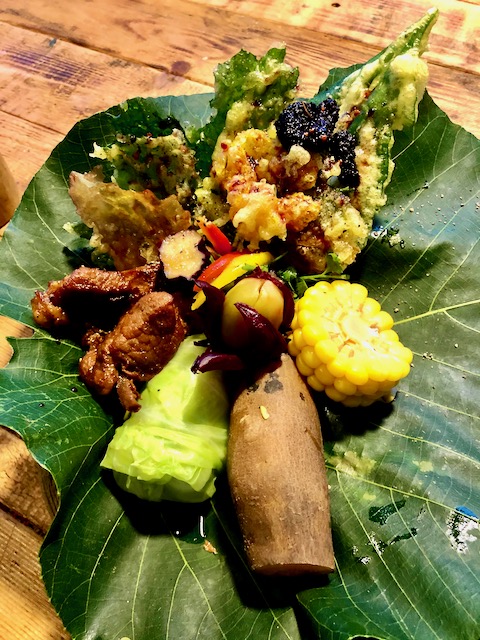
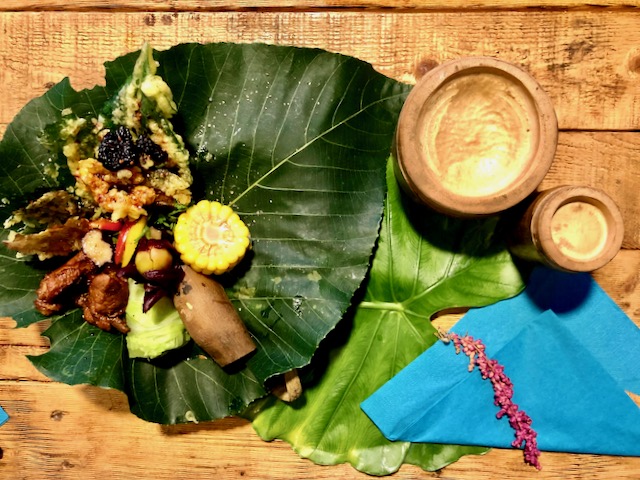
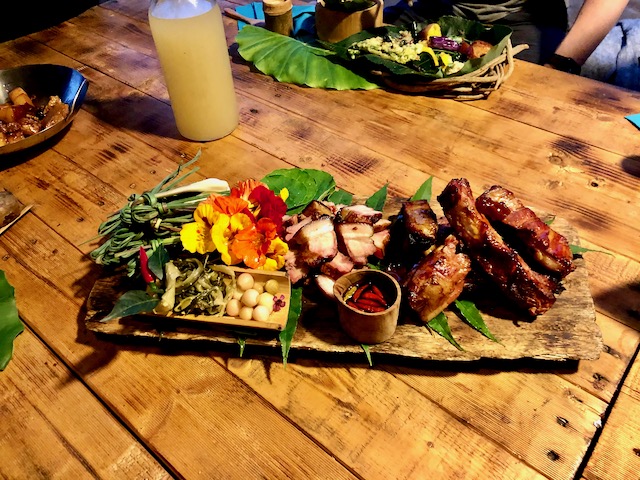
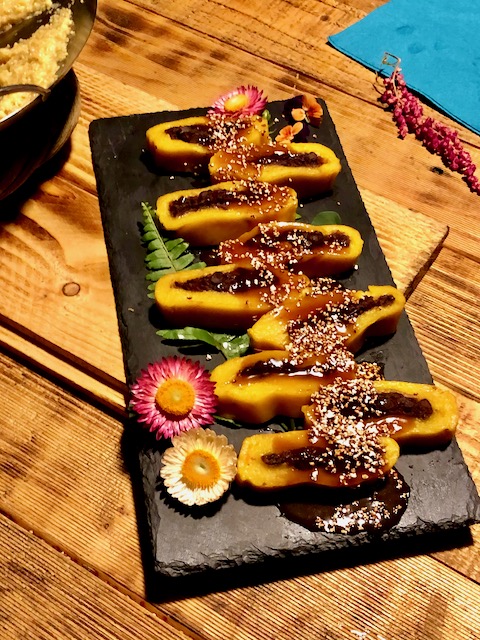
There was so much food that we could not finish it all and were offered some generous leftover amount of pork to take home.
We then drove to our Airbnb to check-in
Day 2: Learning about vegan and organic food with Chef Zoe
We spend the morning exploring the town of Dulan. This included walking along the beautiful beach that was a step away from our apartment.
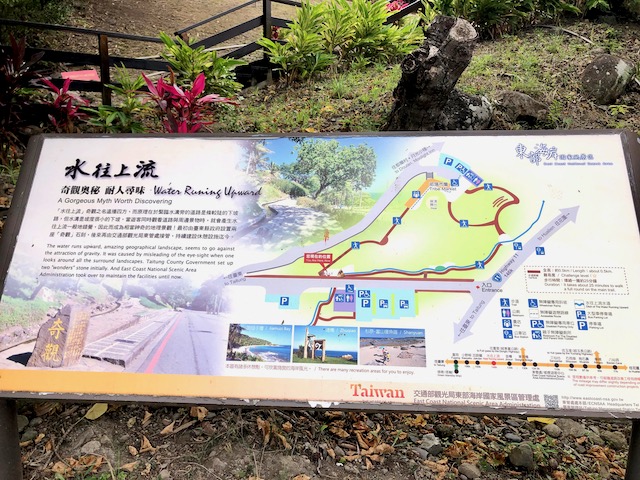
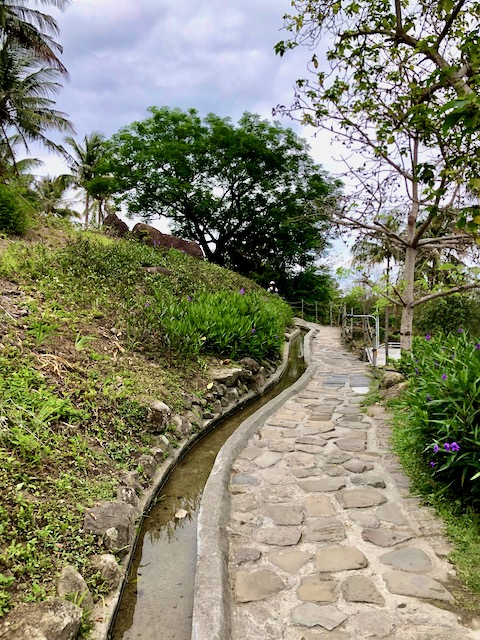
We then went to check out the Dulan Sugar Factory
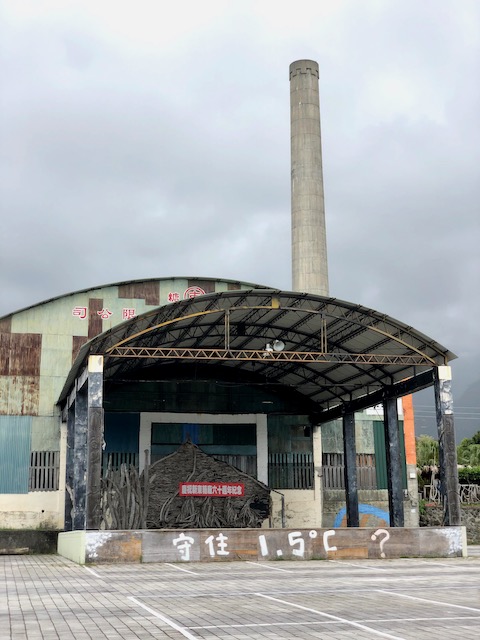
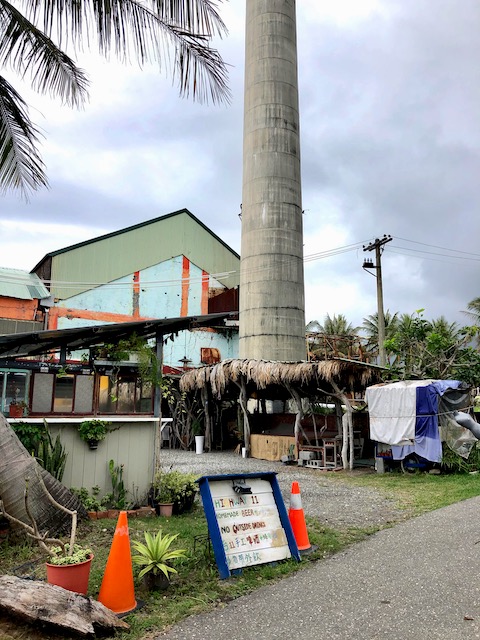
Before heading towards the oceanfront, which provided some amazing views of the ocean along with plenty of space to relax and take some IG pictures.
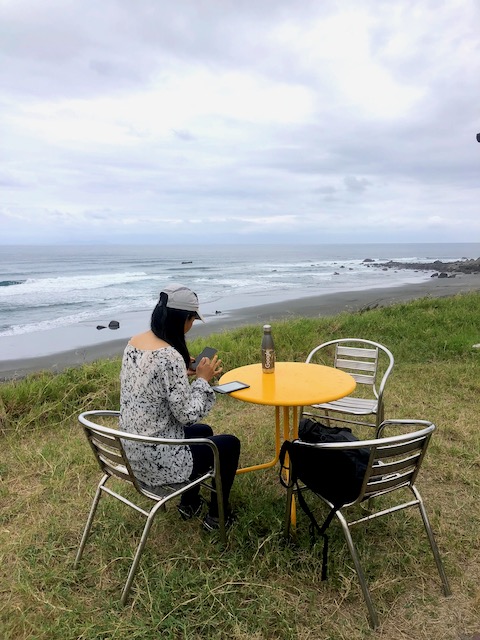
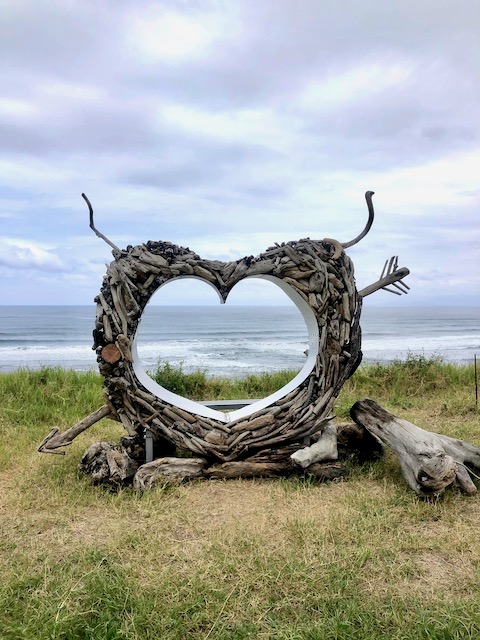
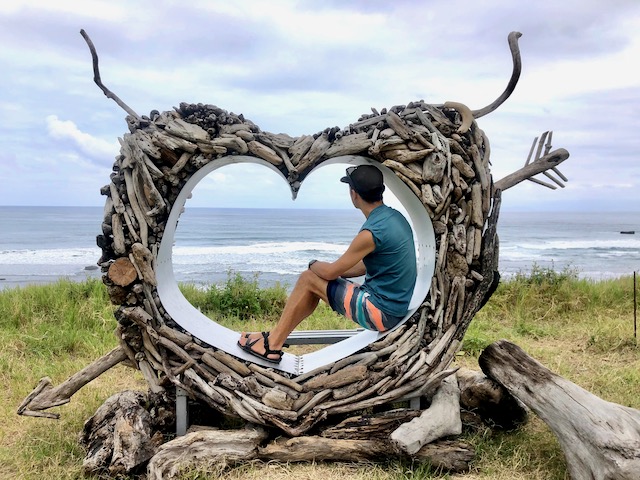
We then join head back to Dulan and checked out at a coffee shop while waiting for our friends to kick off our afternoon experiences.
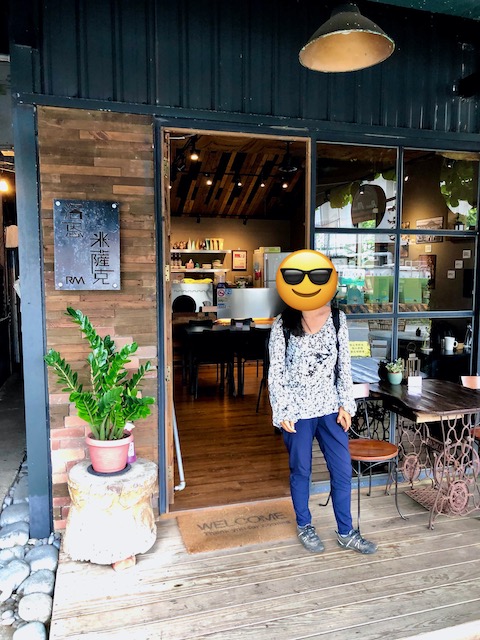
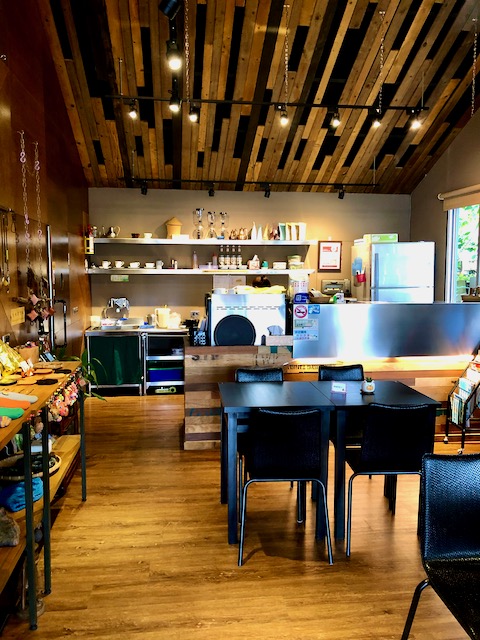
First stop: water spinach harvesting. We met with Mei Lin (our harvest host) and went to her garden which was mostly made of rice paddies. She explained to us that her production was using organic methods (unlike her neighbor whose field was pretty yellow due to the use of pesticides) and that when it comes to rice, she has to manually take care of snails who laid their eggs on rice plants but also snails eat young and emerging rice plants. Snails also damage the crop by cutting the rice stem at its base, destroying the whole plant. She taught us how to select water spinach and we harvested a few bags for our upcoming dinner.
Cost for this experience w/ Wei: 50 NTD (1.6 USD) per person
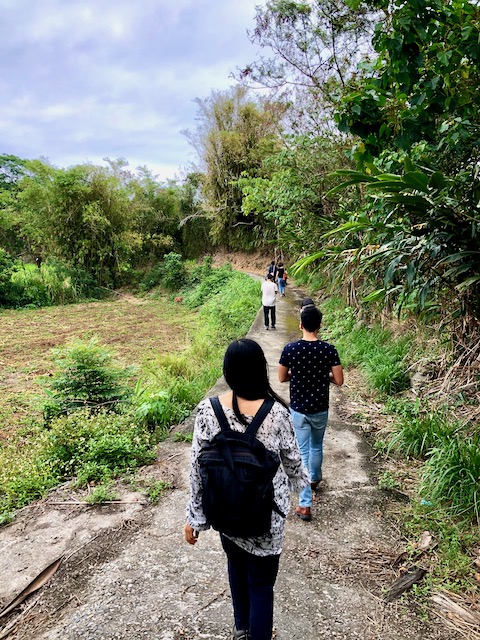
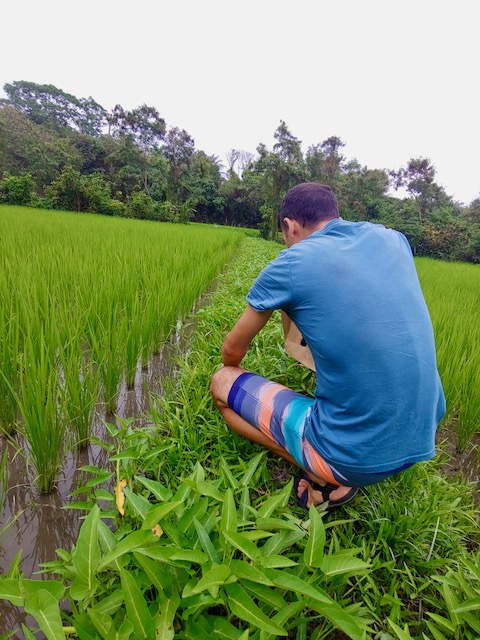
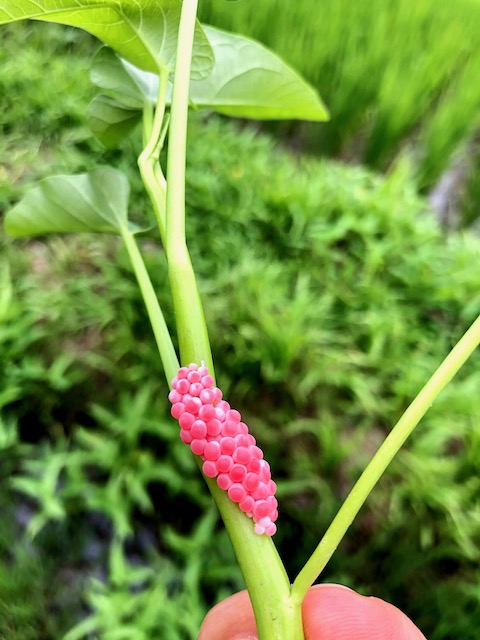
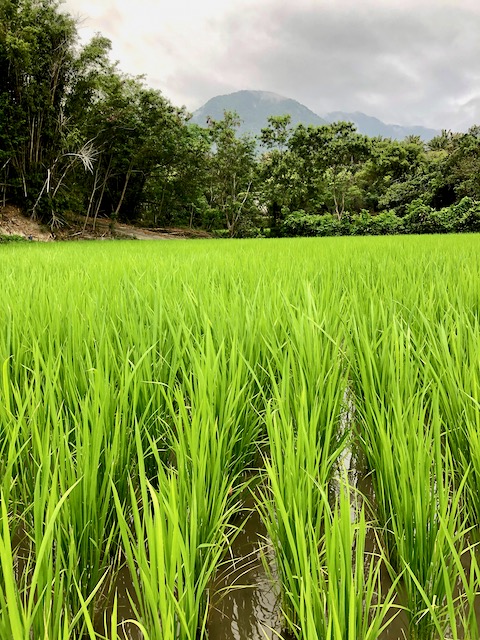
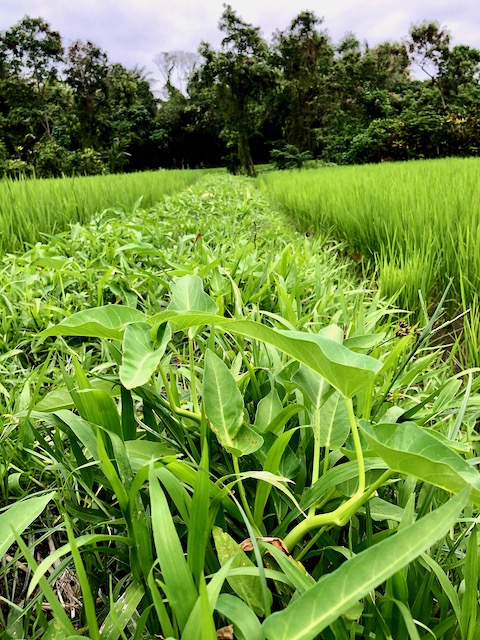
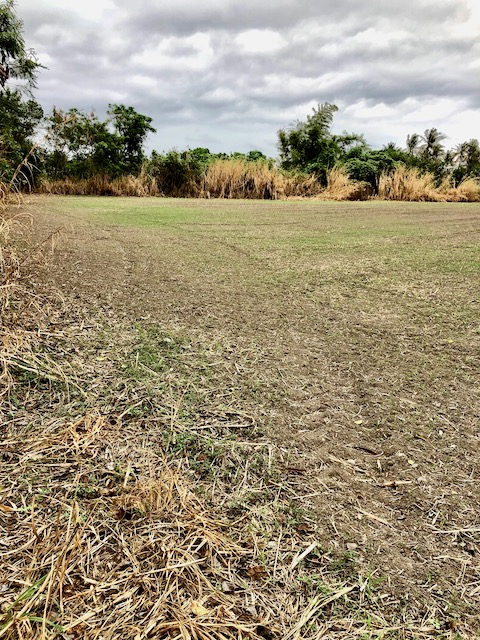
We then met with our private and extremely knowledgeable chef Zoe. She taught us how to cook a multi-course vegan meal using exclusively seasonal and organic produce she purchased for us.
We ended up making a creamy pumpkin curry (w/ carrots, eggplants, mushrooms, potatoes, tomatoes, green beans), a cashew soup (w/ mushroom, edamame, and potatoes), roasted asparagus, a baked tofu dish (w/ mushroom and peppers), a salad (guava, apple, tomatoes, lettuce, cucumber, red cabbage w/ passion fruit dressing) and cooked some rice as a side dish.
Zoe explained to us each dish as well as how she picked her ingredients, which market she goes to, and reminded us why (even in Taiwan) choosing organic food is important to eat healthy and chemical-free food.
This was by far the most instructive experience we had through this week.
Cost for this experience w/ Zoe: 500 NTD (16 USD) per person
Day 3: Learning about rice and meeting a generous and wonderful couple
To burn off some of the extra calories we’ve been indulging in the past couple of days, we went for a refreshing ocean swim by our Airbnb in the morning while our friends were working from a coffee shop.
We kicked off the afternoon activities by driving back to Guanshan and making a quick stop in Luye (A town popular for its annual air balloon festival) to get some popsicles. I’m mentioning this not only because the popsicles were delicious but also because this shop was entirely self-service and based on trust. This meant that everyone could pick up any popsicles they wanted and paid by using a self-service money box. Something that would definitely never work in most countries and that is not uncommon to see in Taiwan!
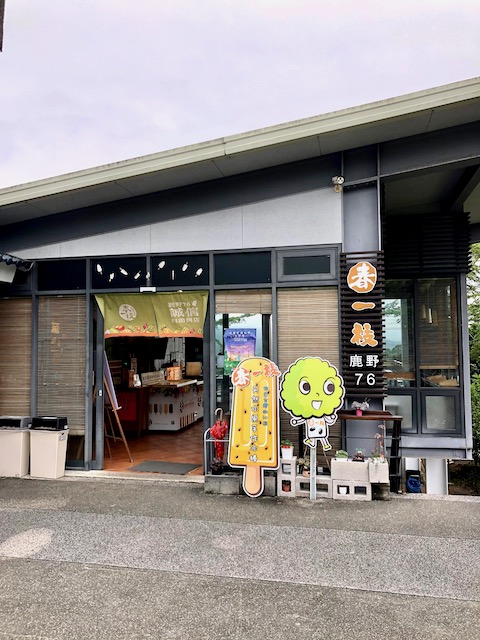
By 4 pm we met at the restaurant of the couple that was going to introduce us to rice making among other activities. We started the experience by gathering wild vegetables from their garden. From very tasty spinach to ugly carrots, beets, and tomatoes. Once again this couple was making a point to mention that they were using organic methods and we could definitely see by the shape and color of the produce. Plus once you get to taste organic food, you can definitely tell how more tasty and yummy they are.
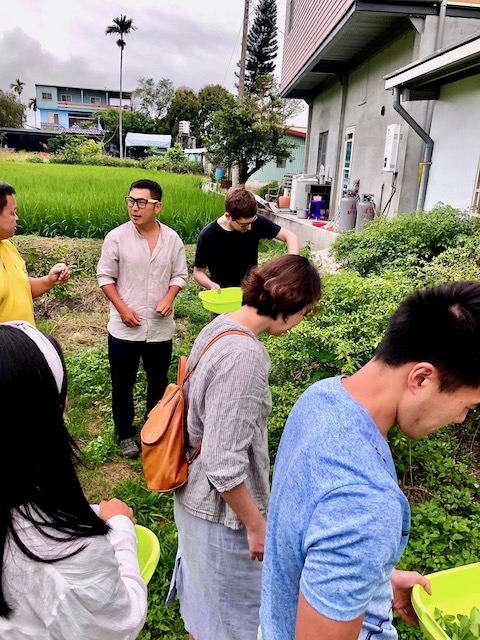
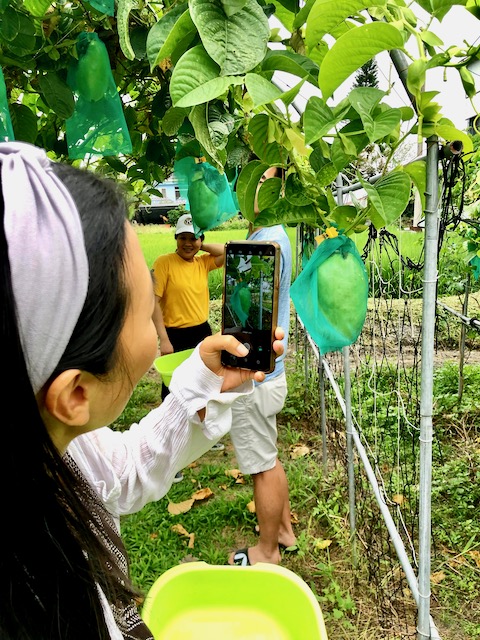
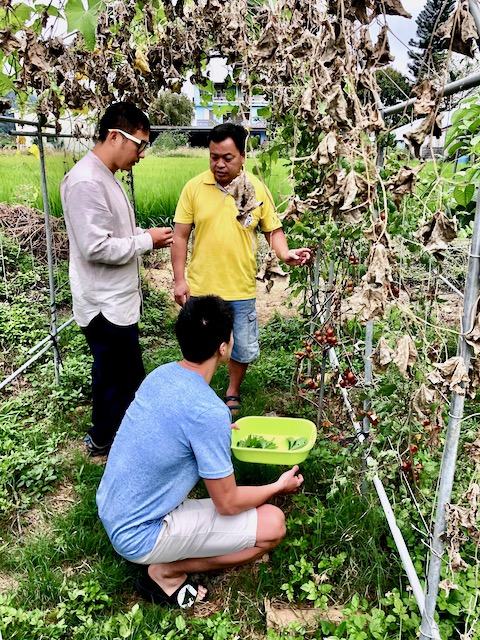
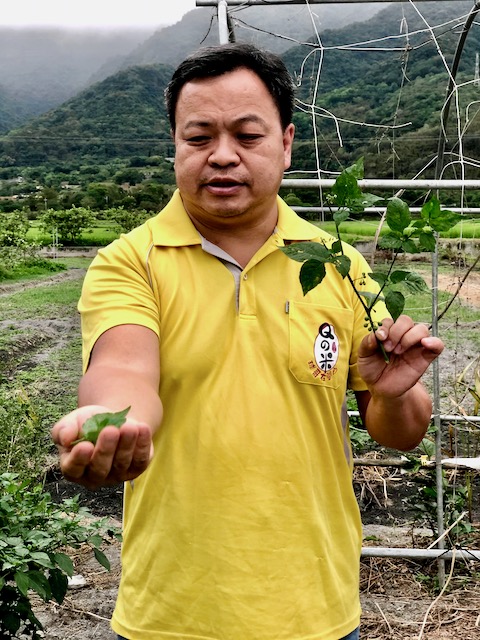
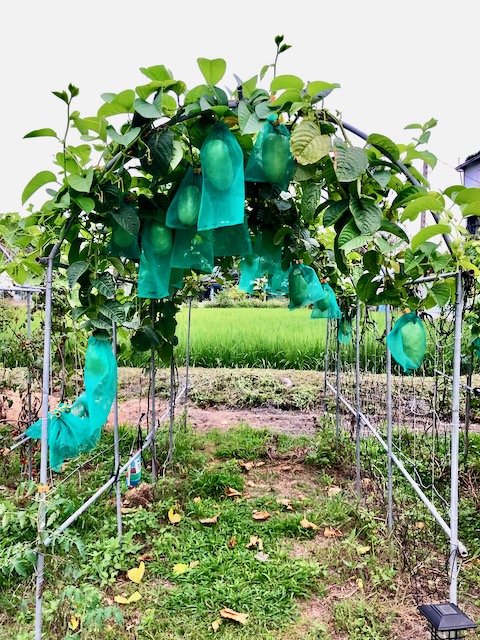
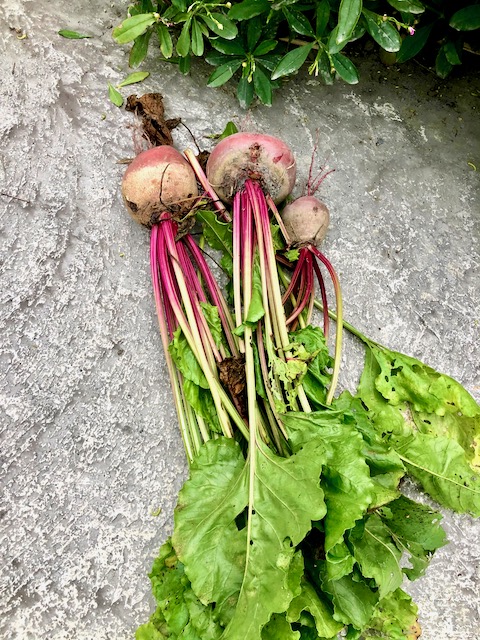
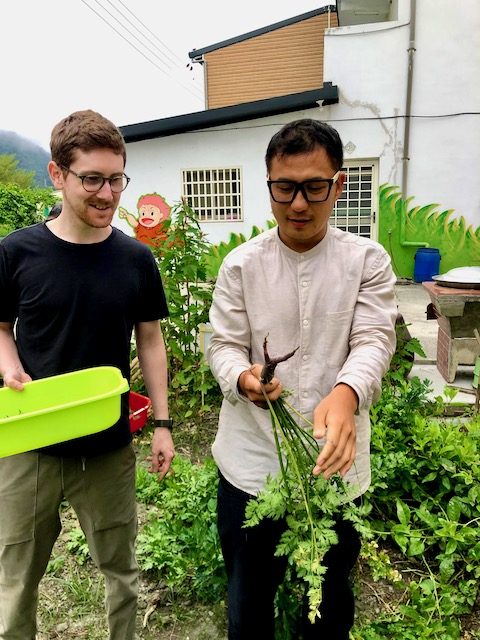
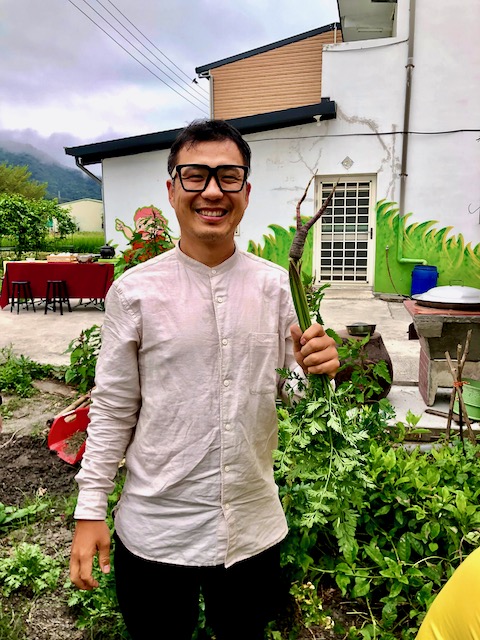
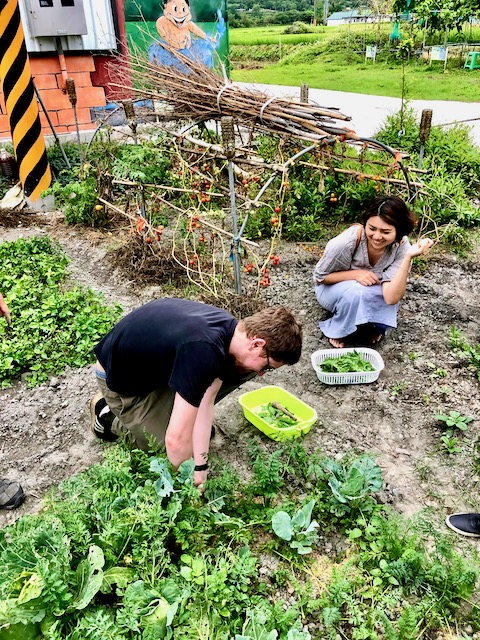
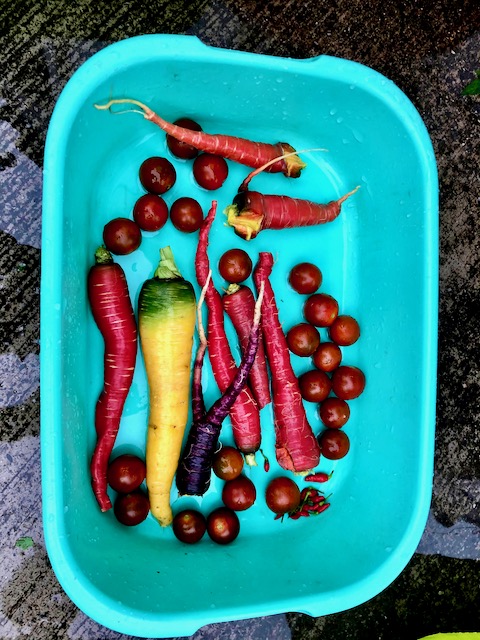
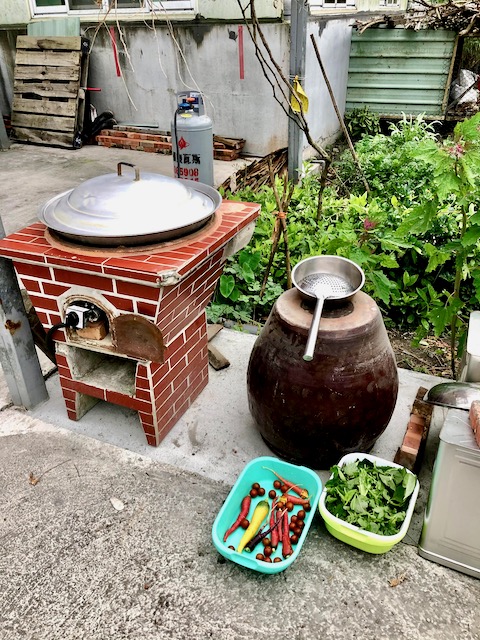
We then moved to make gnocchi (using rice flour + wheat flour) and pannacotta from scratch. Two fun activities that were a bit labor-intensive, especially for the gnocchi 🙂
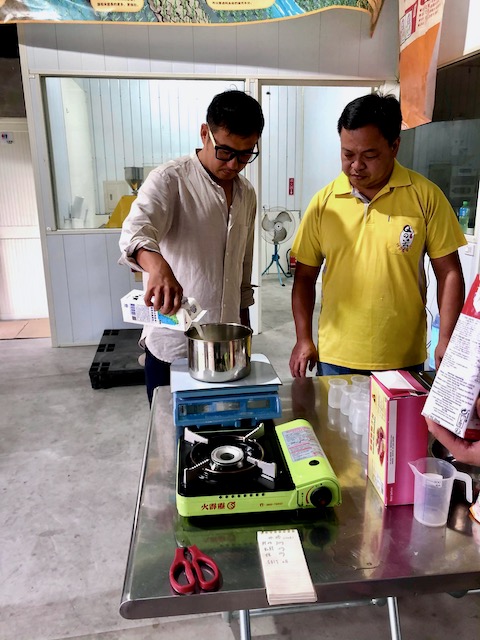
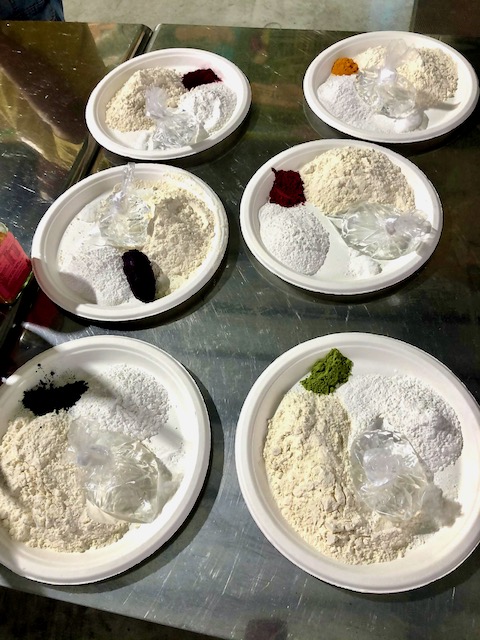
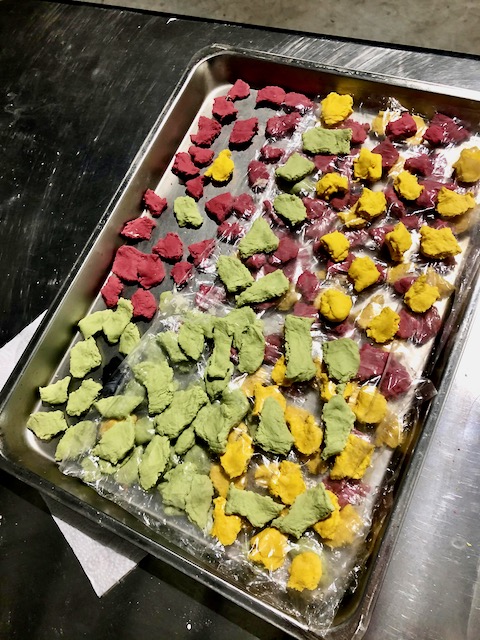
Then they showed us their rice processing factory and taught us how rice was processed back in the days. The process is very similar to what we did with the millet two days earlier. We started by pounding in a giant pestle the rice husk with two big mortars until the husk was gone.
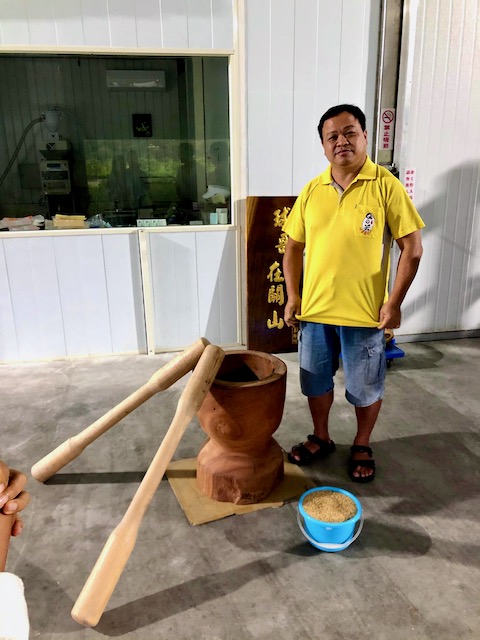
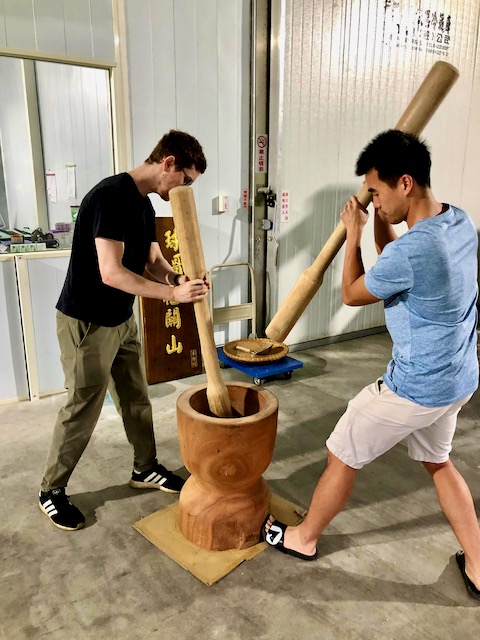
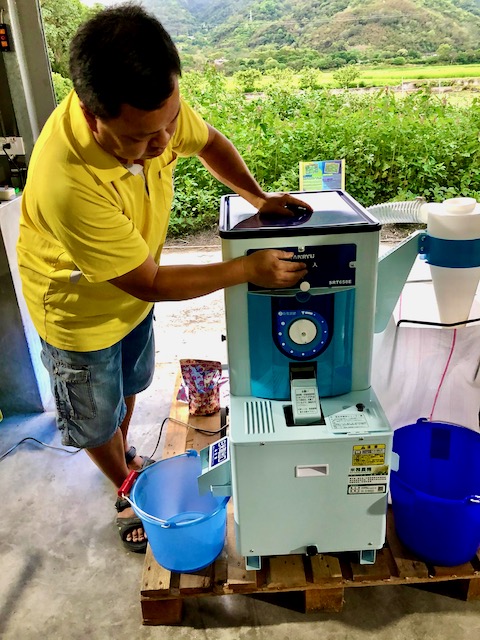
Nowadays they use a machine (worth about 150,000 NTD – or $5,000 USD) to deshell the rice to the level of their liking (from brown to white and anything in between).
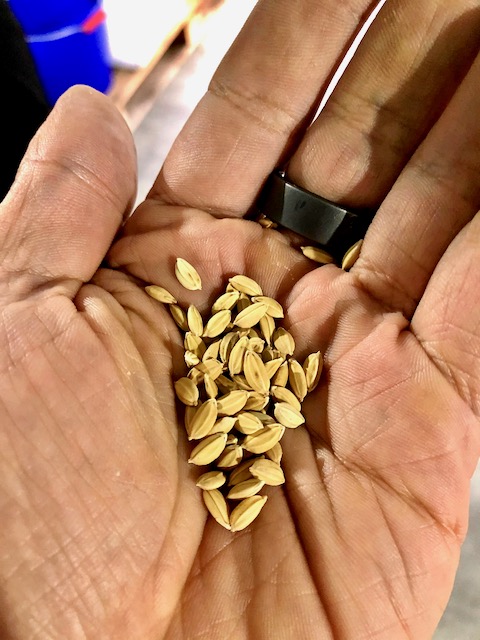
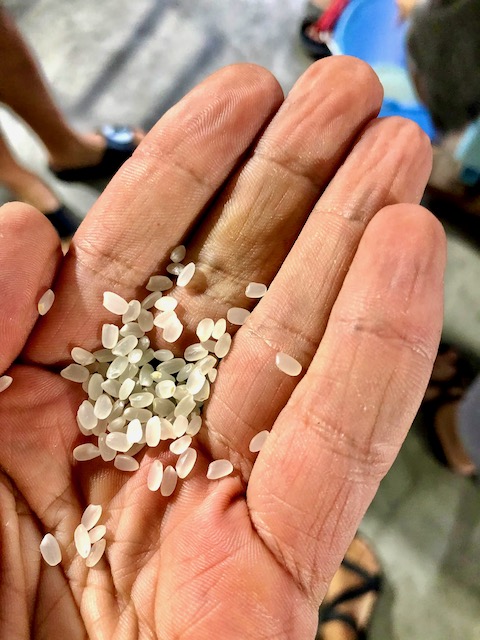
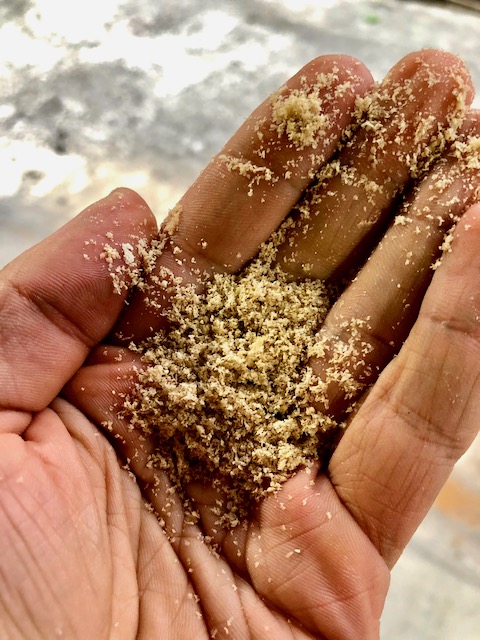
Did you know that people started to eat rice with the husk around them before realizing they could remove the husk to make it tastier? Most people used to eat brown rice while only the rich could afford white rice as the process to get from brown to white rice was pretty labor-intensive. Paradoxically this leads the rich folks to suffer from diabetes due to the high glycemic index of white rice over brown rice.
This couple also showed us how rice cakes were made, using another machine (worth 90,000 NTD – or $3,000) that would take rice grain and pop them as rice cakes using heat and pressure. They were by far the best rice cakes I had in my entire life. So crunchy, warm, and light!
We then moved to dinner where we got to enjoy the fruit of our labor which includes our very colorful gnocchi (we used several natural food coloring to make them), rice, pork, mulberry juice, purple rice tea, panna cotta, and a couple of other side dishes.
Not only did we learn a lot about rice and had another wonderful dinner, but these people were also probably the most generous and kind people we’ve met through this journey. (As a side note it turns out that they do sell their rice in Taipei from time to time and we happened to meet them after we came back from this trip. We are definitely going to have them as our main rice providers while we stay in Taiwan!).
Cost for this experience: 500 NTD (16 USD) per person
Day 4: Putting it all together: cooking our own multi-course dinner and sharing it with locals
For our last day of activities, our goal was to put together a multi-course dinner inspired by what we learned during the week. After coming up with the list of dishes we were going to cook, we headed outside in the morning to go grocery shopping using the local places that Chef Zoe provided us as we wanted to exclusively buy organic and seasonal products.
Upon successfully completing our shopping, we made a stop at a Sushi restaurant that had the best sushi rice I had in Taiwan as it turned out this place hire a sushi chef dedicated to preparing the sushi rice.
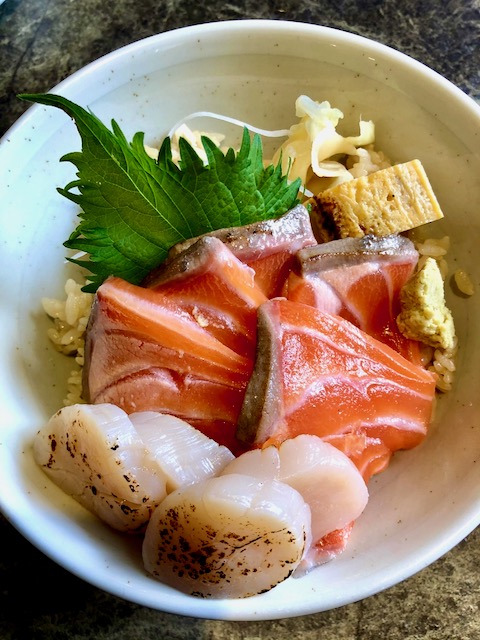
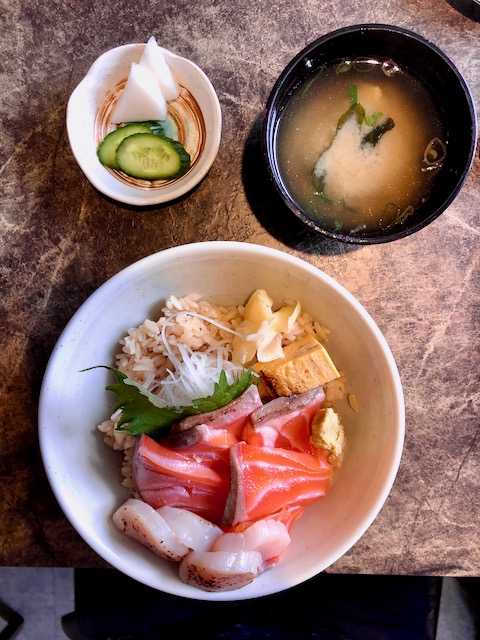
After our lunch, we went to the TTMakers co-working space & incubator that has quite a spacious and beautiful kitchen to put together our meal.
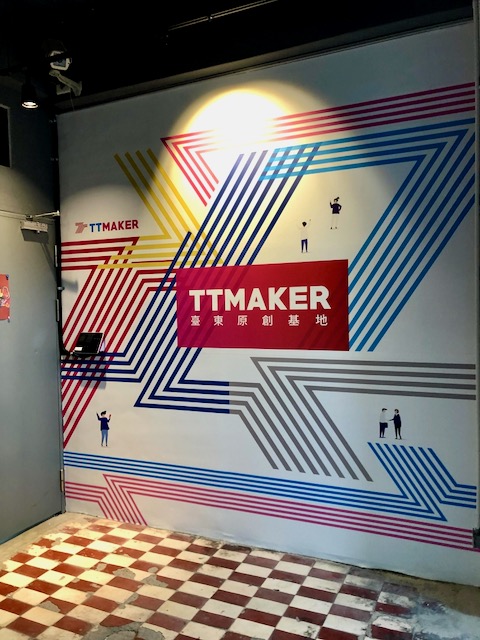
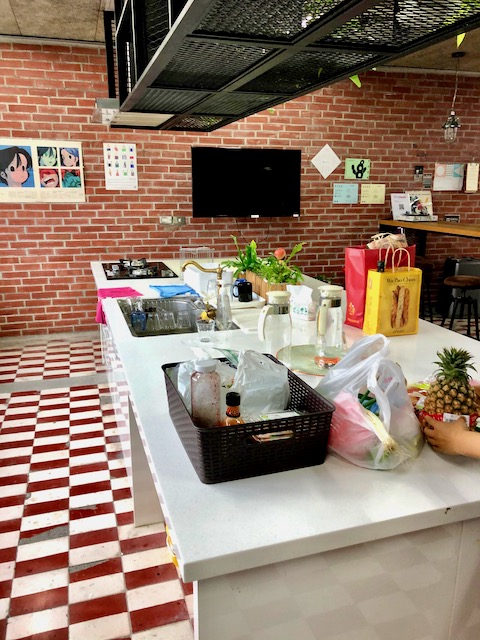
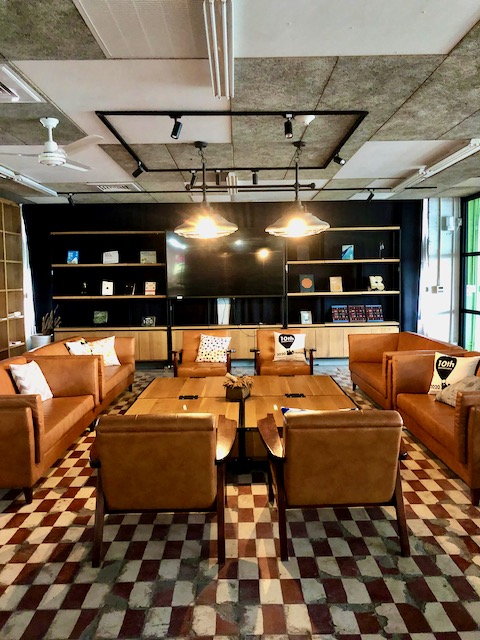
Our menu was the following:
- Appetizers:
- Cashew and mustard dip with lettuce
- Cashew, potato, and bacon bits soup (inspired by Zoe)
- Mains:
- Water spinach salad (from our harvest)
- Chicken stew with wild pig, carrots, mushrooms
- Roasted garden vegetables (from the farm – beets, carrots)
- Dessert
- Bitter & Sweet Dark chocolate Rice cake desserts with nuts
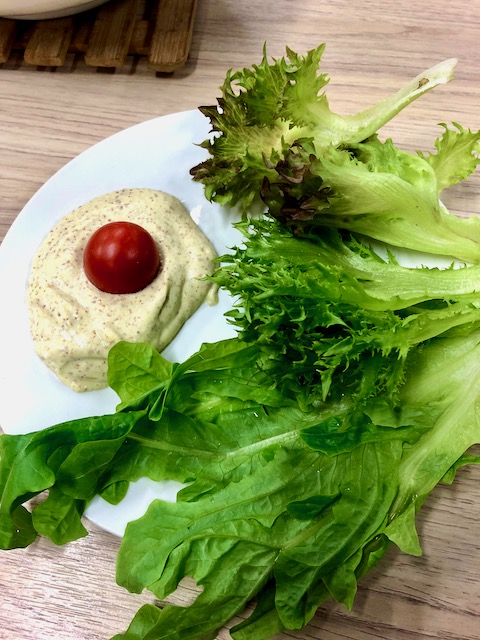
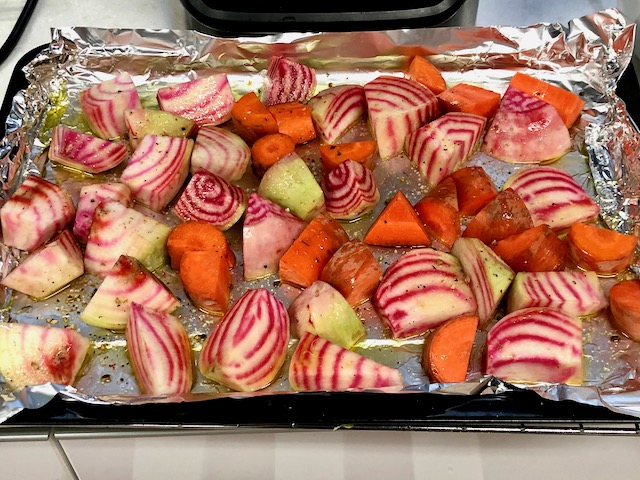
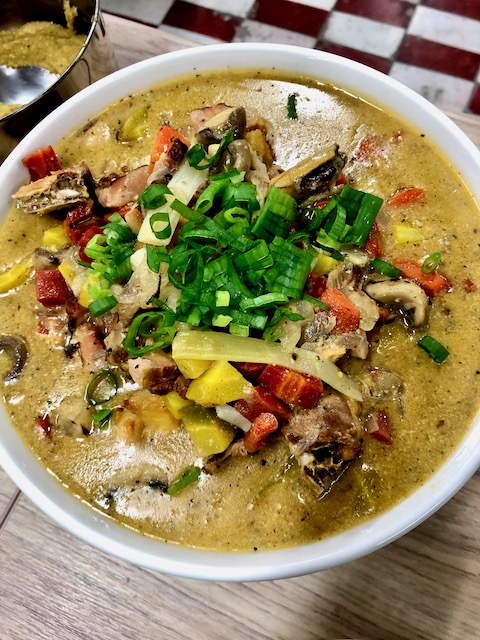
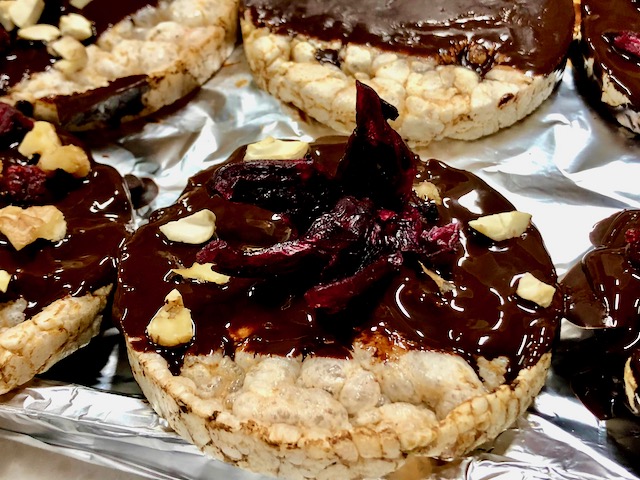
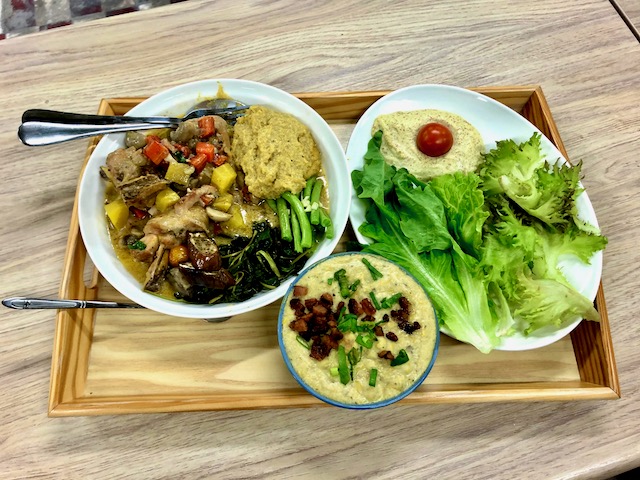
The friend who organized this week was able to bring a few locals to our table to who we introduced our menu to. One of these guests was the curator of the Taitung Slow Food festival that took place the week before. It was the perfect round-up to share our learnings with her and also learn more about the Slow Food movement in Taitung.
Day 5: Reflections and lessons learned
As we packed our stuff in the morning and said goodbye to everyone before commuting back to Taipei, we had a few hours to reflect on what we learned during this week.
Here are my main takeaways for what has been one of the most immersive and wonderful food weeks in Taiwan:
- Organic is the way to go – While we always shop at local markets and avoid anything that isn’t produced in the country we live in. That being said, we rarely pay attention to whether or not products have been grown using conventional or organic methods and it turns out that Taiwan does its fair share of conventional farming. We’ve decided to start asking the vendors about how the products they sell are grown and would also be looking at targeting organic farmers market whenever possible/available
- Millet / Rice production is very labor-intensive. We will definitely make sure we will never ever leave a single grain of millet or rice on our plate moving forward 🙂
- Taiwanese people love their food and excel at cooking amazing dishes, using authentic and sometimes decades-old techniques
How much did we spend?
If you’ve been following our adventure in Taiwan you know that the cost of living here is pretty affordable (read: our cost of living in Taiwan in 2020) so you might not be too surprised by how much we ended spending on this 5 day week.
TL;DR; As a couple, we spent a total of 766 USD (or 383 USD / person) on this 5-day local food immersion trip!
| Category | Total Cost per person | Comments |
|---|---|---|
| Accommodation | 153 USD | This covered 4 nights at the Airbnb – Total reservation was 28,000 NTD for 6 |
| Transportation | 98 USD | This includes our train ticket to/from Hualien-Taipei + car rental to/from Taitung-Hualien and gas |
| Dining out / Snacks | 30 USD | Sushi lunch: 400 NTD / person Others snacks: 500 NTD / person |
| Food Experiences | 85 USD | Kaina workshop + dinner: 1,500 NTD / person Rice experience + dinner: 500 NTD / personChef Zoe vegan dinner: 500 NTD / personWater spinach harvesting: 50 NTD / person |
| Grocery shopping for dinner at TTMakers | 17.5 USD | 525 NTD / person |
| TOTAL | 383 USD | Or 77 USD / day and per person! |
So this is it! If you plan to come to visit Taitung, we highly encourage that you check out every single place we visited and if you can speak mandarin and are passionate about food the same way we are, you should definitely book Chef Zoe!
Here is the local contact information for each place we’ve been:
- Kaina: https://www.facebook.com/GuyanaWorkroom/
- Chef Zoe: https://m.facebook.com/ziranerran/
- Rice workshop: https://www.say-q.com/
- Sushi restaurant: https://www.facebook.com/y089332885/
Check also this Maps which contains most of the places we visited and where we stayed:
What do you think about this experience? Did you know that Taitung has such a rich food culture? Have you had time to immerse yourself into learning more about the food you eat and learning about cooking healthy and tasty food? Are you surprised by how inexpensive such a week is here in Taiwan?
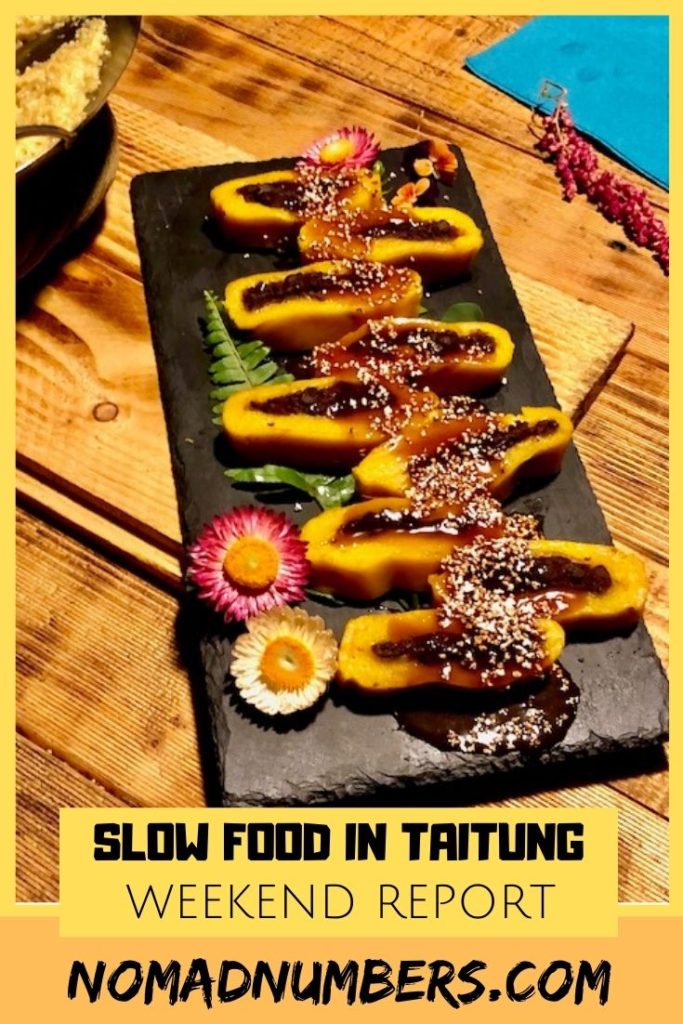


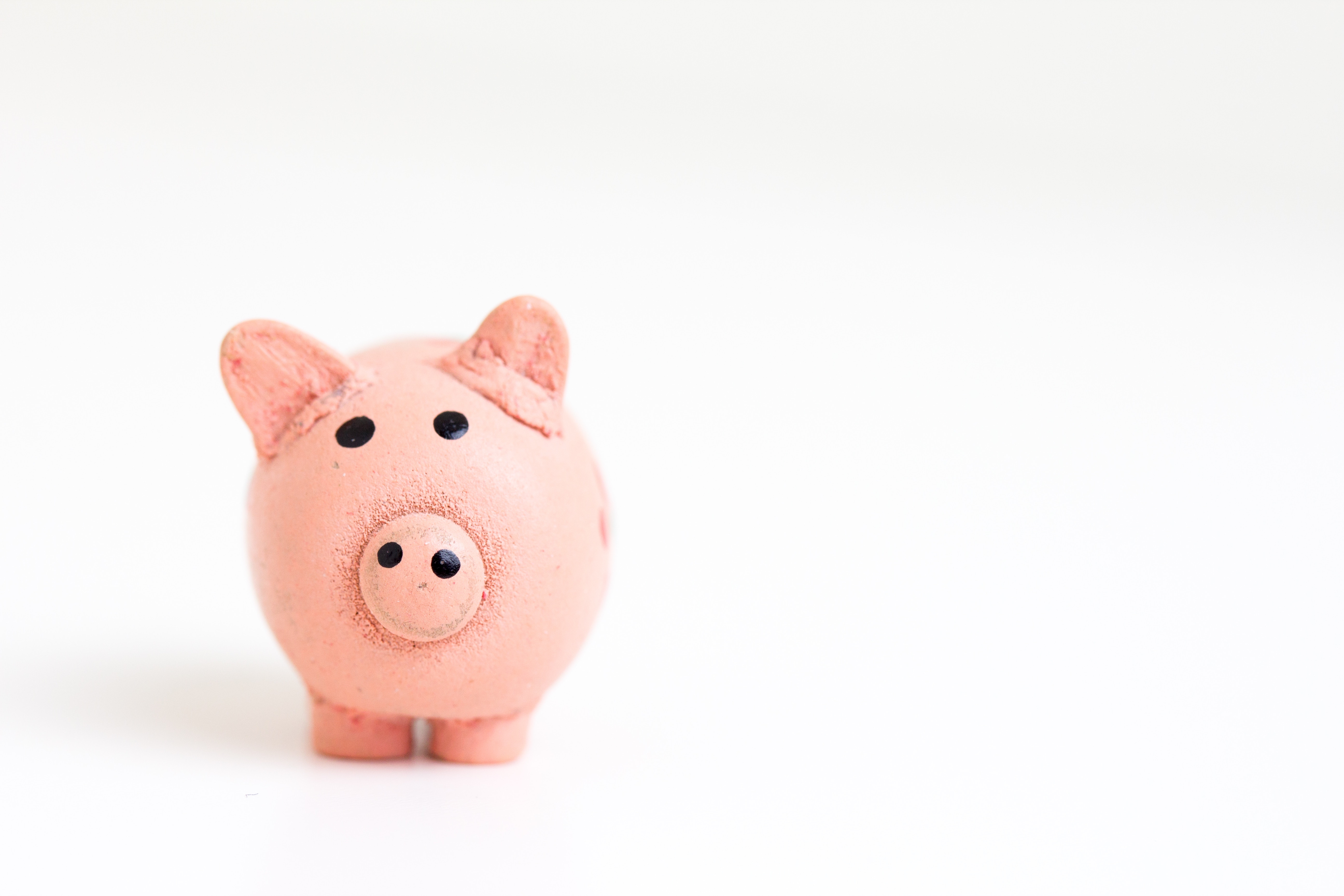
4 Comments
Ping Chu · April 22, 2021 at 3:18 am
I am the privileged few who can design a dual location living.
I work and live between Taipei and Taitung.
Thank you for the lovely and detailed journal on your trip to Taitung. Taitung is a place that will grow on you. There are many much more beautiful places in the world. But, in Taitung, you will experience the generosity of the people here. It is, of course, a place you will feel safe and enjoy the indigenous culture and make friends of like-minded people easily.
Taitung is very lucky to attract people from all over the world. I believe if we love a place, we should find a way to get involved with the local affairs. Finally, I would strongly recommend people to find a “purpose” first before deciding to live and work in Taiting as a digital nomad.
Mr. Nomad Numbers · April 26, 2021 at 6:04 am
Thank you Ping! We have been in Taiwan for more than a year and love the island so much that we try to share as much of our experiences as possible!
Luye International Hot Balloon Festival · September 21, 2024 at 7:45 am
[…] Slow Food in Taitung: our top recommendation to immerse yourself in Taiwanese food culture […]
Guide to Hiking Hehuanshan in Taiwan (5 Baiyue Peaks) · October 19, 2024 at 3:15 am
[…] Slow Food in Taitung: our top recommendation to immerse yourself in Taiwanese food culture […]